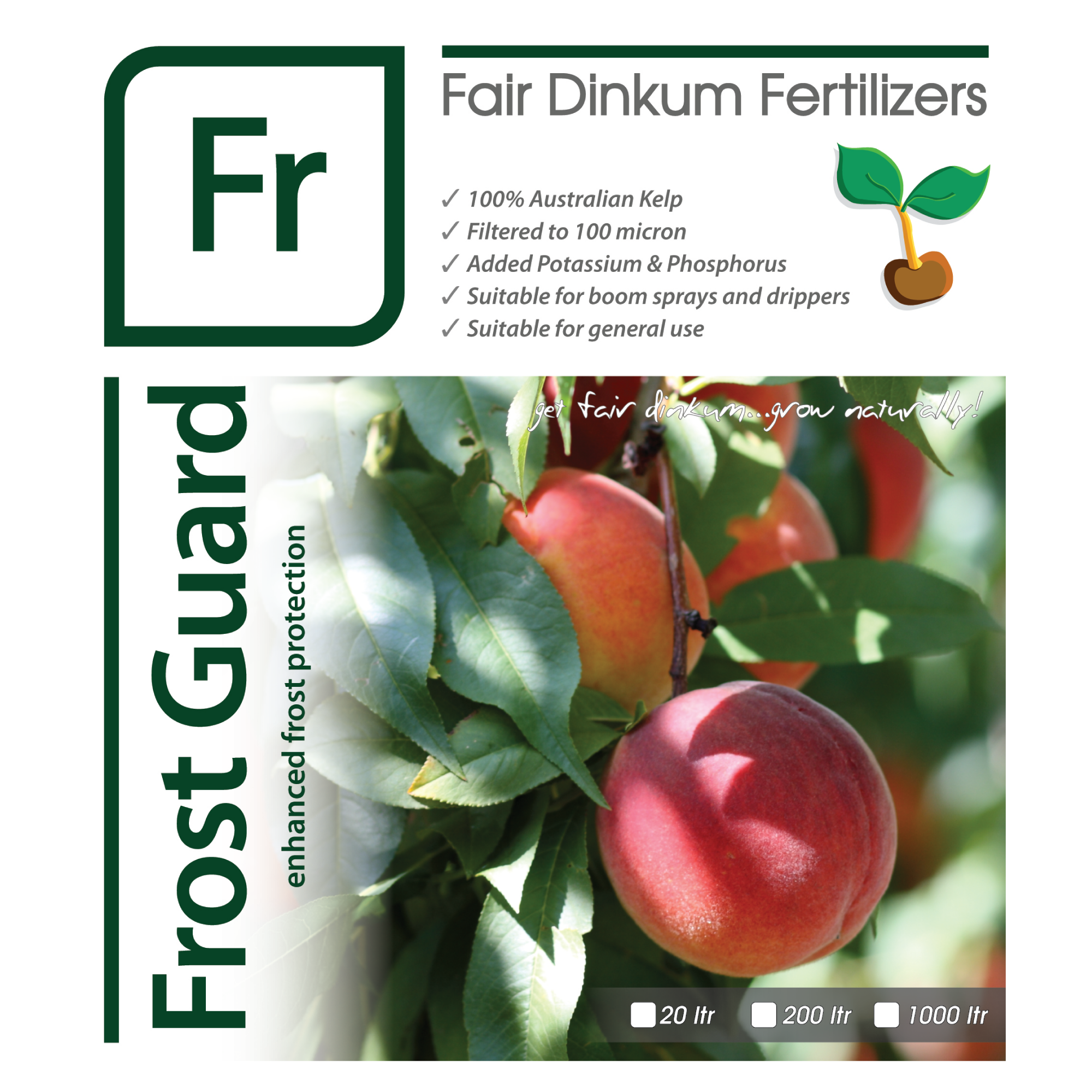

Fair Dinkum Fertilisers Frost Guard – Protect Your Plants from Frost and Boost Their Health!
Frost Guard is your go-to solution for protecting plants from frost damage, offering an added layer of protection and many more benefits.
While no method can guarantee 100% protection from frost, Frost Guard helps reduce the risk and provides a range of extra advantages even in frost-free seasons!
Why Use Frost Guard?
Frost Protection: Reduces frost damage by increasing frost tolerance in a wide range of crops, including stone fruit, apples, pears, grapes, and crops like wheat and canola.
Increased Plant Health: Even without frost, Frost Guard helps improve plant vitality by:
Boosting chlorophyll production for healthier plants.
Enhancing nutrient uptake to support growth.
Increasing tree vigor for stronger, more resilient plants.
Improving the plant’s ability to manage water stress.
These benefits come from the plant growth regulators in the product, including auxins, betaines, and cytokinins, which work together to promote plant health and growth.
What Makes Frost Guard So Effective?
Frost Guard is made from liquid seaweed and electrolytes, which not only improve frost resistance but also help your plants recover and thrive throughout the season.
When applied early, Frost Guard can increase frost tolerance by 2-3°C in many crops, including stone fruit and grapes. In later growth stages, it can still offer a boost, with an increase of 1.5°C in frost tolerance.
In grapes, early application even helps with fruit set, and later use leads to better fruit quality and higher yields. It’s also useful for reducing heat stress during hot weather, though be cautious when using it late in the season.
How Does Frost Guard Help Your Plants?
Increased Frost Tolerance: Helps plants withstand cold temperatures by improving their natural defense against frost.
Stronger Growth: Supports healthier, more vigorous plants, leading to better yields and fruit quality.
Enhanced Nutrient Absorption: Ensures your plants get the nutrients they need to grow strong and produce more.
Frost Guard also contains added potassium and a small amount of phosphorus, both of which are easily absorbed by your plants for faster results.
How to Use Frost Guard
Frost Protection: Apply early in the season for best frost resistance results.
General Use: It can be applied during the growing season for increased plant vitality and fruit quality.
Note: Do not use on Australian natives.
Ready to Protect and Boost Your Plants?
Frost Guard is perfect for growers who want to protect their crops from frost damage and boost plant health all season long.
Whether you’re caring for fruit trees, vines, or other crops, Frost Guard offers an easy and effective solution.
Analysis
Potassium 9.2%
Phosphorous 2.9%
Filtration 100 mic
(An organic formulation is available also. that differs from above to meet the organic standard).
%W/V is grams per 100ml of product
ppm is parts per million on weight basis
g/l is grams per litre
mic = microns
Product Sizes Available
1 ltr, 5 ltr, 10 ltr, 20 ltr, 200 ltr, 1000 ltr.
Product Brochure Product Label



